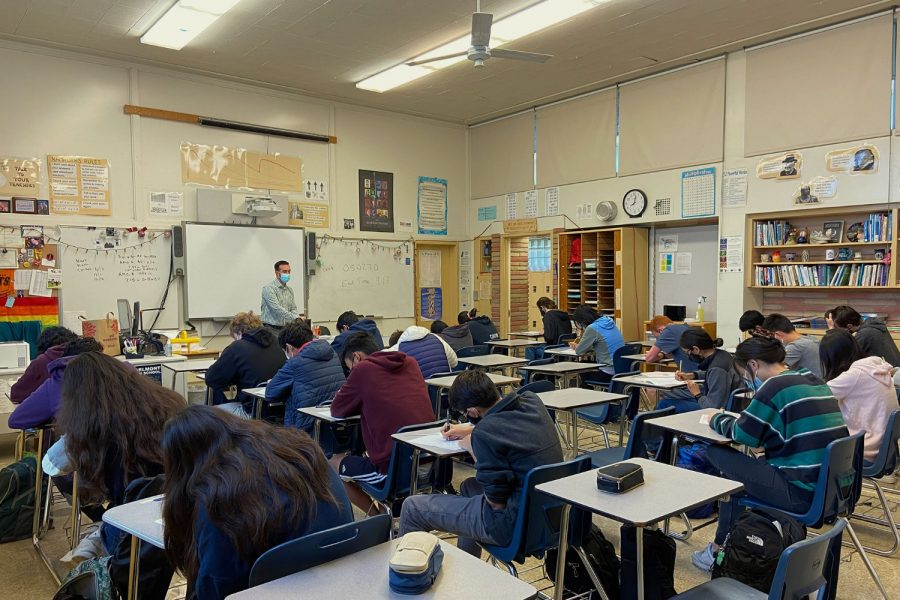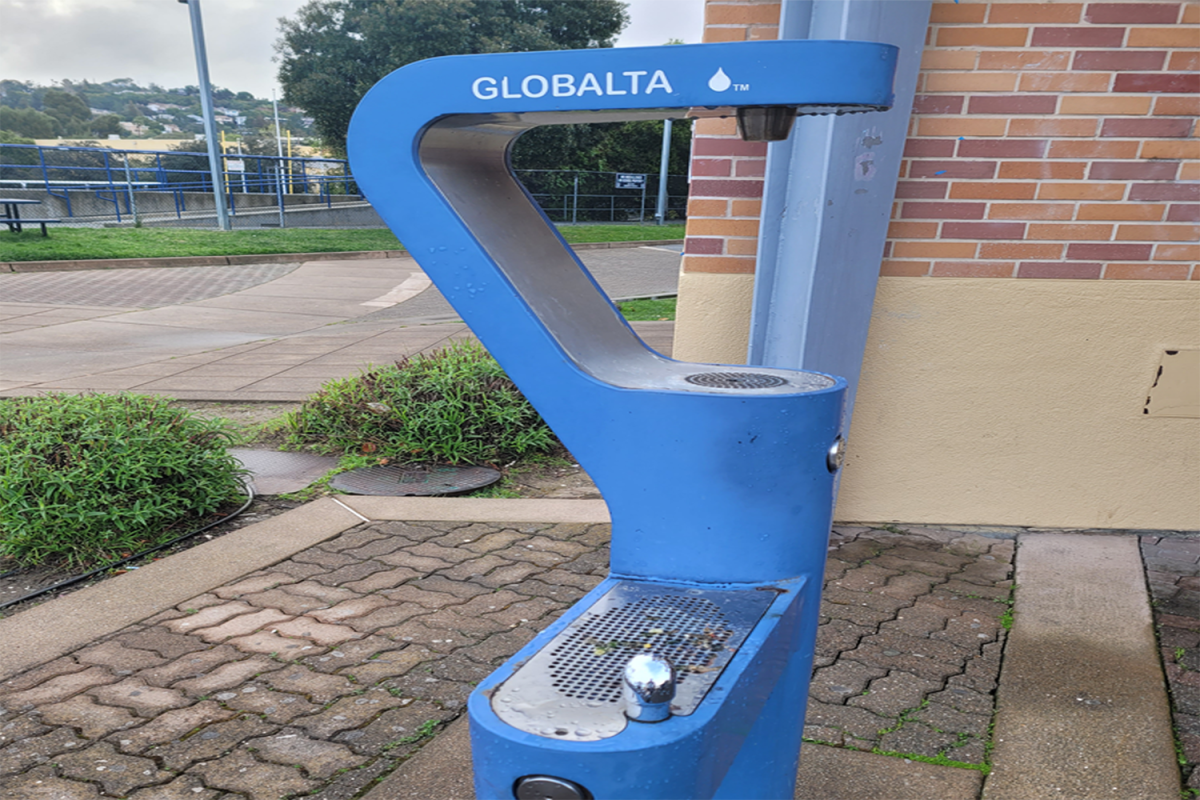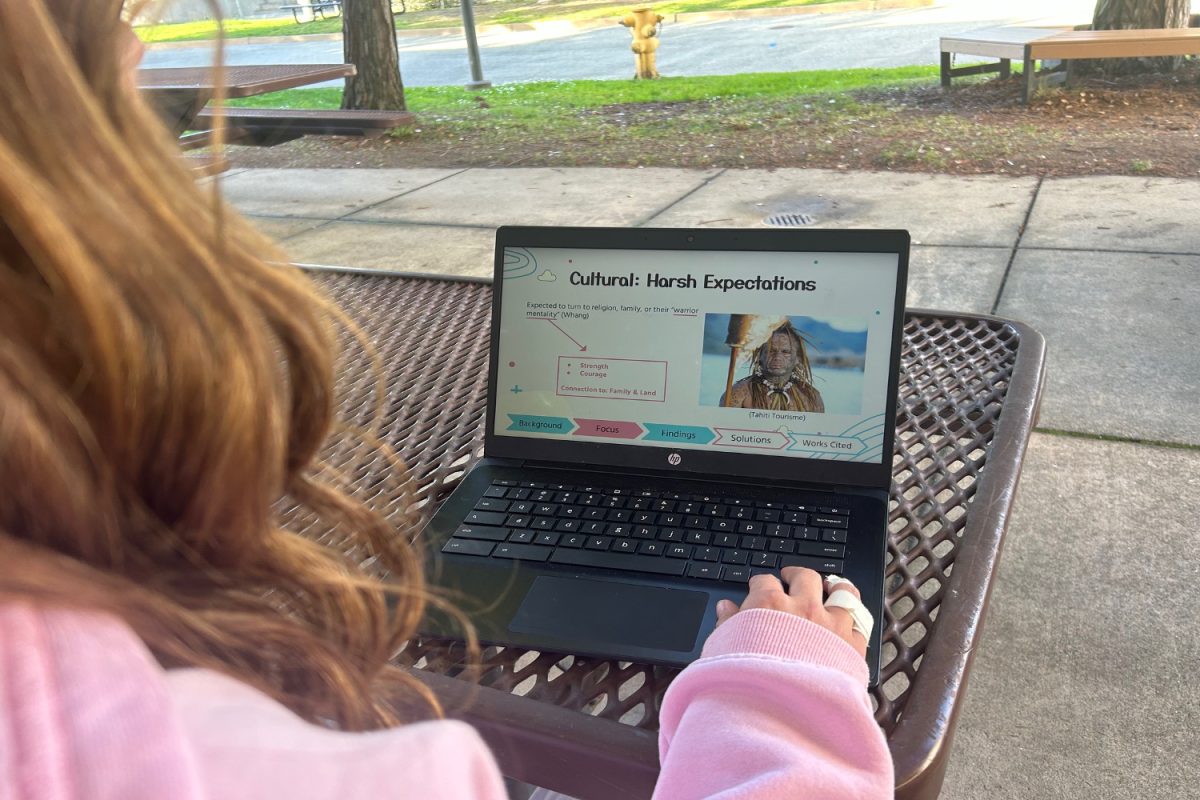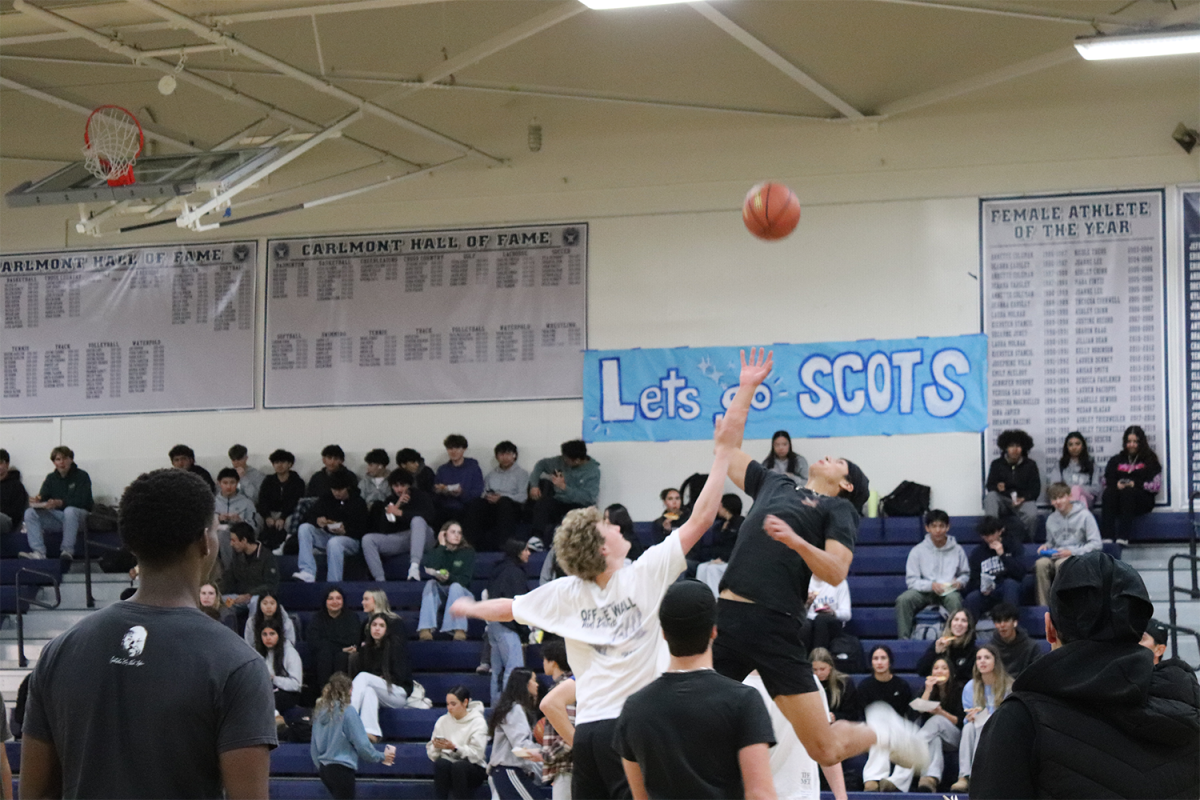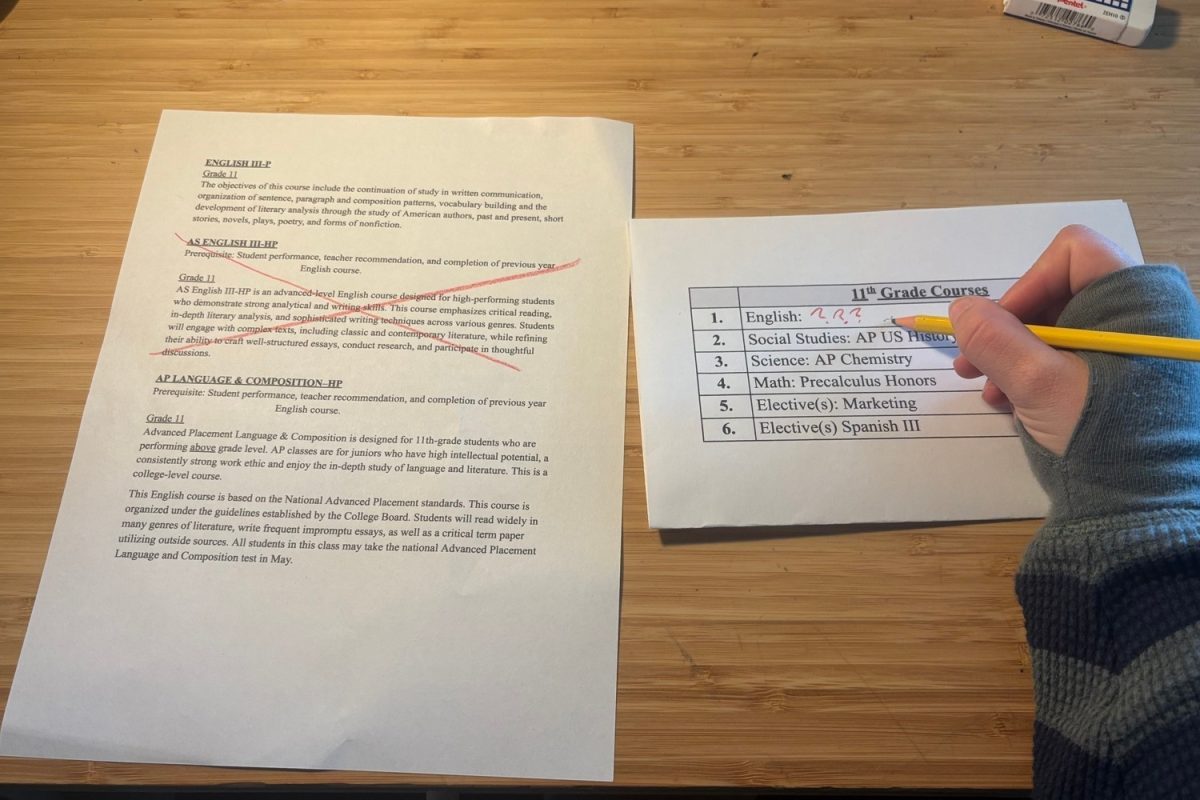Over two hundred Carlmont students of all grades took the American Math Competition (AMC) last Wednesday.
The AMC is widely considered one of the largest and most prestigious competitions in the U.S., and hundreds of thousands of students, eighth through 12th grade, participate in this event yearly.
“They’re very difficult problems though,” Robert Tsuchiyama, a math teacher, said. “And students can get discouraged, so we try to tell them that this is a very difficult test.”
Less than 1% of all high school students that participated in the previous AMC 10/12 in February received perfect scores, and the average score was around 65 points out of 150 for both exams.
Nevertheless, this does not mean that students only participate in hopes of getting a good score.
“I want to evaluate my math skill and present new and challenging opportunities for myself in the field of math,” Paul Zhou, a sophomore, said.
Many students may be reluctant to take the AMC because they believe they will not score well or think they do not have the resources to. However, several ways to prepare for this test don’t require private tutors or special classes.
“There’s a website called The Art of Problem Solving, and a lot of students go there to find techniques and skills to improve their problem-solving ability,” Tsuchiyama said. “Mr. Ramroth is in charge of the Math Enthusiasts Club, and they practice those problem-solving techniques.”
Those in the Math Enthusiasts Club hone their math skills through discussions and practice problems during their meetings. Meetings during the last few weeks have concentrated on practicing for the AMC.
“The thing about the AMC is that it’s totally different from what you’d normally do math-wise,” Lorenzo Wolczko, president of the Math Enthusiasts Club, said. “There’s a whole different skillset, so you really need to know what you’re up against.”
Problems on the AMC differ from what the typical high school math curriculum offers. The AMC is not concept-based, where multiple theorems need to be memorized, which contrasts with a standard math class.
Instead, students must draw on their analytical and rational thinking skills to solve and understand each question. However, a basic understanding of algebra, geometry, and probability is still necessary and applicable.
“There usually isn’t a correlation between doing well at the AMC and (your mathematical knowledge),” Wolczko said. “So I think it’s a fun thing to do, but it’s not necessarily useful when it comes to actually learning math.”
Despite the challenges the test presents, taking the AMC can come with many benefits for students who perform exceptionally.
“If you qualify for the AIME(American Invitational Mathematics Examination) or even the USAMO(United States of America Mathematical Olympiad), that’s a really big thing,” Wolczkl said.
Those who score well on the AMC are invited to the AIME, and the top scorers in that contest qualify for the USAMO, where they compete to secure a spot as a representative for the United States at the International Mathematics Olympiad.
“Out of all the students in the country that take [the AMC], the top 2% of those students [receive an invitation for the AIME],” Tsuchiyama said.
According to Tsuchiyama, around five to 20 students in Carlmont per year qualify for the AIME, helping them stand out amongst the rest.
Overall, the AMC offers each student the chance to excel and show their skills in mathematics. Many participants believe their experience to be rewarding and beneficial to their further studies.
“It was very worth it,” Zhou said. “It really showed me the difference between knowing how to do problems and actually understanding the basics of math.”

